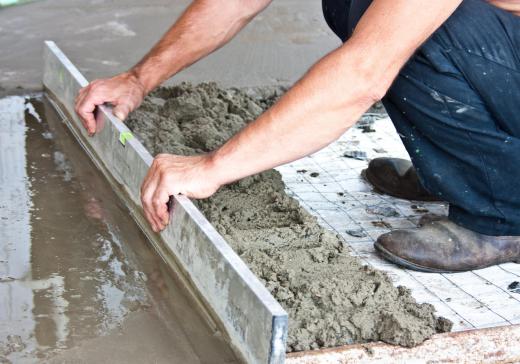Wire mesh is a material that is made from various strands of interconnected metal, usually steel or aluminum. These strands can be welded together, extruded, or even connected by pins or other devices. The size and permeability of the wire mesh will often dictate its various uses; thinner mesh can be used as pasta or vegetable strainers, whereas larger, pinned mesh can be used as a conveyor belt in an industrial setting. Sometimes this type of mesh is used in gardening and landscaping applications as well.
One of the most commonly used types of mesh is welded wire mesh. This is often used in concrete construction, as the mesh can be laid down before the concrete is poured. The concrete can then be poured around the mesh, and once it sets, the concrete will have a higher tensile strength because the mesh contained within will help stabilize the often brittle concrete. This type of mesh is often used in place of steel rebar, which is a series of interconnected steel rods. Mesh tends to be easier to install and it comes at a lower cost than rebar for concrete projects.

Conveyor systems often use wire mesh to transport goods from one location to another. The individual pieces of the mesh can be interwoven to create a flexible belt, thereby allowing the system more mobility and flexibility. Such belts are usually made from stainless steel, since this material tends to be resistant to water damage and corrosion, and it is very durable. Belts made from stainless steel mesh are common in food processing plants and any other warehouse setting that requires the belt to feature increased ventilation and an ability to be washed down quickly and easily.
Very thin wire mesh has a wide array of purposes as well. This material is porous, meaning liquids can generally pass through, though solids will be stopped from passing through. This mesh is therefore often used for filtering. Filters may be used on automobiles and other vehicles, in gardening applications, in industrial applications, and even around the house. The size of the mesh will dictate what types of materials can be filtered. A large mesh panel, for example, can be used to sift sand while keeping large boulders out, while a smaller mesh panel may be woven so tightly that it can keep certain particles or bacteria from passing through.
